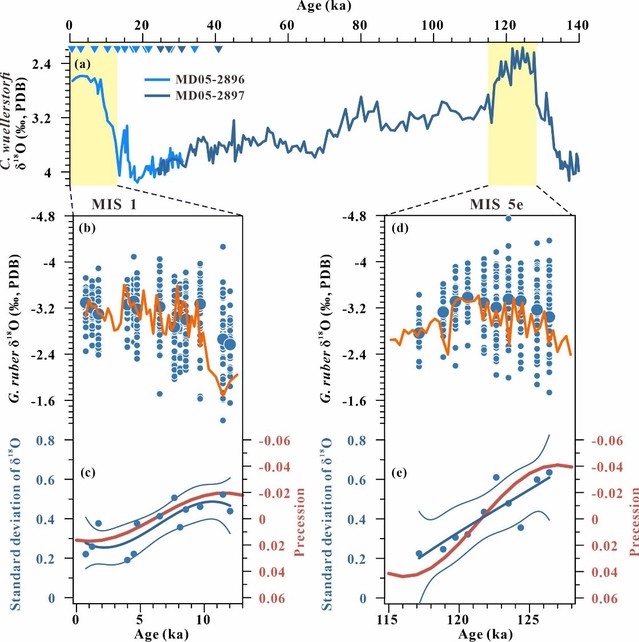Enqing Huang, Shihe Wang, Sihua Wei, Zijie Yuan, Jun Tian
State Key Laboratory of Marine Geology, Tongji University, 200092 Shanghai, China
Abstract:The history of the East Asia winter monsoon (EAWM) and its forcing mechanisms remain elusive due to conflicting reconstructions. In this study, we attempt to quantify changes in interglacial winter monsoon intensity over tropical East Asia, based on reconstructions from the southern South China Sea (SCS) and model outputs from transient simulations (TRACE-21). The new monsoon record is derived from individual-specimen δ18O of planktonic foraminifera, the variability of which is dominated by the seasonality of sea surface temperature and thus the intensity of the EAWM over the SCS. The standard deviation of individual-specimen δ18O shows a gradual decrease from 0.61 to 0.20 and from 0.49 to 0.25 across marine isotope stages (MISs) 5e and 1, respectively, indicating a decline of the EAWM intensity along with precessional changes. Reconstructions and simulations together constrain a 15% decrease of the EAWM intensity over the Holocene, and a more substantial weakening over the MIS 5e. Precessional forcing of the interglacial EAWM variations over the SCS can be mainly explained by two mechanisms. First, a persistent increasing of boreal winter insolation can reduce the temperature gradient between Asian inlands and the Pacific, weakening the entire winter wind field over East Asia. Second, precessional forcing gave rise to an increasing El Niño frequency and magnitude over the Holocene, which facilitated the establishment of an anomalous anticyclonic circulation over the tropical West Pacific and thus reduced the northerly winter winds. Contrary to traditional views, the retreat of the Northern Hemisphere ice sheets during early interglacial periods did not contribute to changes in the tropical EAWM. In addition, model outputs have also explicitly revealed that the mid-latitude and the tropical EAWM systems respond differently to a set of forcing factors, suggesting a spatial discrepancy of the EAWM evolution in the past.
Full Article:https://www.sciencedirect.com/science/article/pii/S0921818123002205?via%3Dihub



